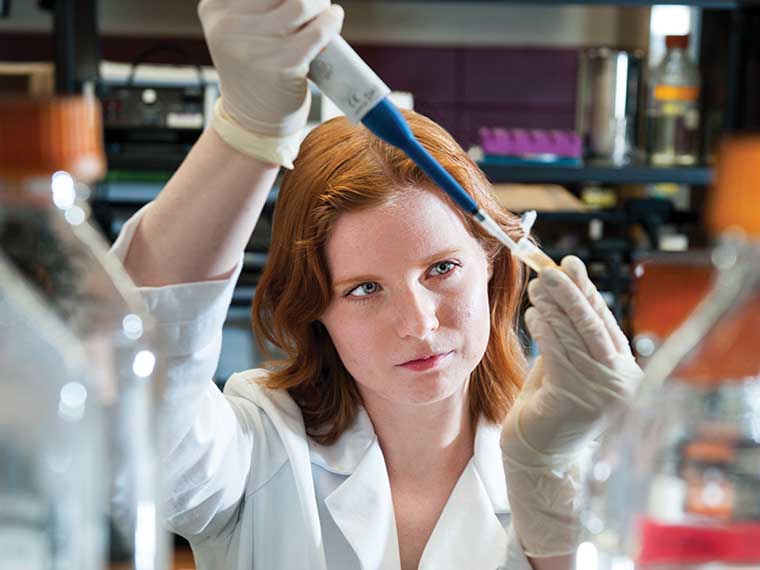The information presented on this page may be dated. It may refer to situations which have changed or people who are no longer affiliated with the university. It is archived as part of Mississippi State University's history.
Kellie Mitchell, a Mississippi State biochemistry major, is conducting research she hopes will one day help save lives.
By studying the heart cells of swine with metabolic syndrome, the College of Agriculture and Life Sciences student is working to unlock clues to help detect heart disease in humans.
There is a significant correlation between heart disease and type 2 diabetes. More than 275,000 Mississippians have type 2 diabetes, which often leads to some form of heart disease or stroke. Metabolic syndrome, a precursor to type 2 diabetes, is the subject of Mitchell's research.
"Basically, we hope our research will contribute to a blood test for cardiovascular disease one day. Right now, people usually don't know they have cardiovascular disease until they have a heart attack, stroke or some other life-threatening event," Mitchell said. "If researchers can develop a blood test before that happens, we could potentially help save millions of lives."
Mitchell's research specifically examines exosomes in healthy and unhealthy cells. Exosomes are tiny vesicles that cells use to communicate with each other. Scientists are trying to find a biomarker that shows cardiovascular disease on a cellular level.
She is working under the direction of Yuhua Farnell, assistant professor in MSU's Department of Biochemistry, Molecular Biology, Entomology, and Plant Pathology, and James Stewart, assistant professor in the Department of Biological Sciences. George Eli Howell, III, assistant professor in the College of Veterinary Medicine, and Dan Zhao, a doctoral student studying molecular biology, also are providing guidance.
Collaborators from Indiana University School of Medicine and Purdue University provided tissue and blood samples from their Ossabaw Swine Core Facility, the only research and large-scale breeding colony of Ossabaw swine in the world with samples certified to have a gene mutation-basically, a propensity to obesity.
"Most researchers use a different model, such as mice, but since the pig is anatomically closer to humans than mice, this tissue is ideal for our research," Farnell said.

